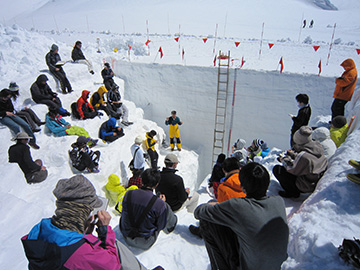Program of Natural and Environmental Sciences 自然環境科学プログラム

- Home
- Program of Natural and Environmental Sciences
Materials continuously flow and cycle across the earth, and diverse organisms, including humans, live in delicate harmony with the environment.
The Program of Natural Environmental Sciences aims to nurture individuals who can understand the importance of this irreplaceable global environment through the lens of science.
The education and research pursued by this program span new and broad fields. We look forward to welcoming motivated students who are full of curiosity and eager to learn independently.
Curriculum
Understanding the natural environment requires an integrated scientific perspective that applies physics, chemistry, biology, and earth science learned through high school.
comprises faculty members from various disciplines, enabling students to develop the ability to view the natural environment from multiple perspectives through specialized coursework.
In laboratory classes, students can conduct a wide range of experiments such as qualitative and quantitative chemical analyses, soil and river water analysis, microbial culture, and plankton observation.
Furthermore, field training courses allow students to learn the fundamentals of fieldwork, such as on-site sample collection and measurements, utilizing Toyama's rich natural environment. In their graduation thesis research, students work on environmental research topics under faculty supervision, acquiring not only specialized knowledge and skills but also the ability to take initiative in addressing current issues.
The program welcomes students who possess strong curiosity and enthusiasm for environmental science, along with the perseverance and determination to tackle even challenging subjects.


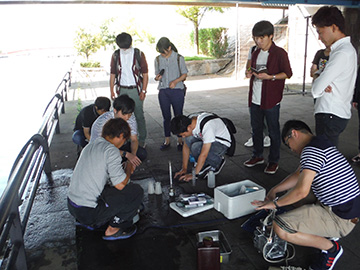
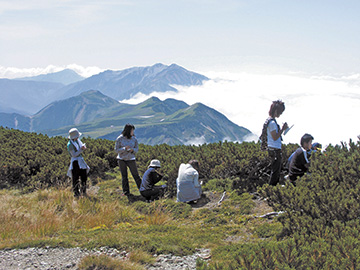
Research Overview
With the expansion and diversification of human activities, various environmental problems such as greenhouse gas emissions, air pollution, water pollution, and soil contamination have become increasingly apparent. Consequently, there is a growing need to understand the mechanisms underlying environmental problems and to develop methods for environmental remediation. Our Program approaches these issues from the perspectives of biology, chemistry, and earth science, developing simple and rapid analytical methods for trace hazardous components and environmental pollutants in water and soil, and investigating soil, river water, seawater, and the atmosphere both domestically and internationally. Furthermore, we are engaged in research on elucidating environmental dynamics in terrestrial and marine areas using trace element analysis and isotope analysis.
Additionally, we aim to develop environmentally conscious energy and mineral resources and contribute to sustainable economic development by analyzing groundwater and hot spring water to explore the utilization of Toyama Prefecture's abundant geothermal resources, and by developing exploration technologies for seafloor hydrothermal deposits in the waters surrounding Japan.
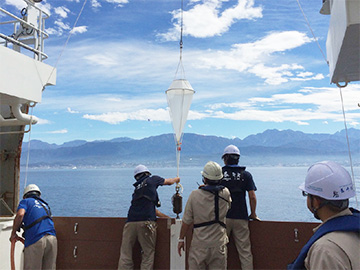

Meanwhile, our lives are sustained by diverse organisms. For humanity to enjoy sustainable ecosystem services, it is essential to conserve biodiversity and understand the interactions between organisms and their environment, as well as the history of life.
It is also necessary to research environmental problem countermeasures that utilize organisms, such as bioremediation of pollutants and the use of microorganisms like petroleum-degrading bacteria. The Department of Natural Environmental Science conducts wide-ranging research from the cellular level to the ecosystem level to deepen understanding of organism-environment interactions. For example, we study the elucidation of biological defense mechanisms against environmental stress, how plants perceive environmental changes, microbial community structures in the atmosphere, river water, oceans, and groundwater, methods for assessing and remediating environmental water pollution using microorganisms, relationships between plants and flower-visiting insects, and the relationship between alpine ecosystems such as Mount Tateyama and climate change. We also conduct research on the ecology and conservation of wild animals, including freshwater fish. Additionally, we advance research on paleoecology and life evolution using fossils to deepen understanding of the history of life.

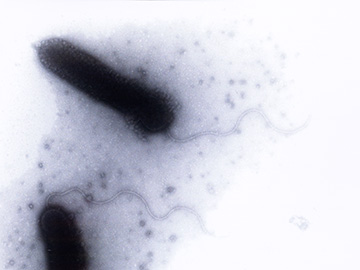
Our planet has both an atmosphere and water. Airborne particulate matter (aerosols) and the clouds formed with them as nuclei cause various climatic effects. To elucidate these effects, we are working to understand their impacts from a physics perspective. Additionally, atmospheric moisture forms ice crystals that become snow crystals and fall to the ground as snow or rain. Snow has diverse forms depending on its growth, and we are working to elucidate the mechanisms of snow crystal formation.
Toyama Prefecture has Mt. Tateyama, which reaches elevations of 3,000 meters, where snow accumulation exceeding 6 meters can be observed in spring. This snowpack contains not only winter snowfall but also various particles and components of different origins that arrive at Tateyama, and we are working to understand it as a time capsule of the global environment.

